
Perennial Forbs Around Las Vegas, Vegetation Around Las Vegas
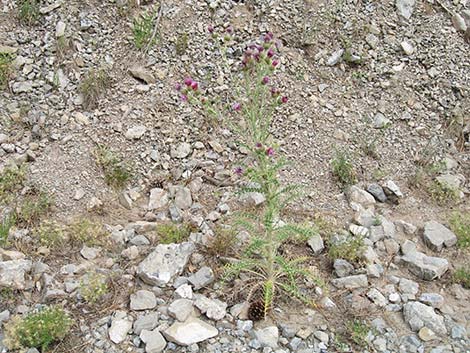 Upright stem with spiky leaves and purple-red flowers |
General: Arizona Thistle (Cirsium arizonicum) is a two-year or short-lived perennial that spends the first year as a rosette of spiky leaves. In the second year, it sends up a flower stalk with more spiky leaves and topped with a spike-protected purplish flowerhead. Unlike most other thistles, the purple flowers of Arizona Thistle tend to stick straight out as if they were spraying out of the flowerhead. The spines protecting the flowerheads and leaves are relatively short (about 1/2-inch long). The underside of the leaf is covered with woolly hairs (tomentose). Around Las Vegas, Arizona Thistle is an uncommon component of montane vegetation communities in dry, well-drained areas in the Canadian Life (Pine-Fir Forest), Hudsonian (Bristlecone Pine Forest), and Alpine (Alpine Tundra) life zones. Look for this species up on Mt. Charleston and in the Sheep Range. Compare this species with Whitespine Thistle, which (1) has much longer spines protecting the flowerhead, and (2) lacks woolly hairs on the leaves. Family: Sunflower (Asteraceae). |
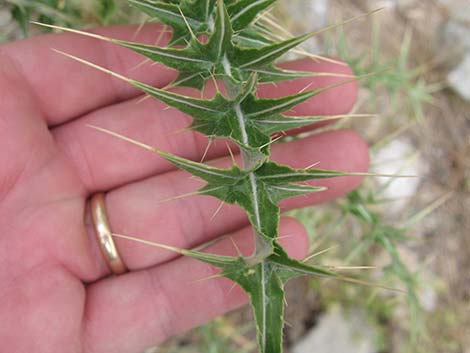 Leaf with long, sharp spines |
Other Names: Plant Form: Basal rosette, then upright stalks topped with flowerheads Height: To about 4 feet. Stems: Usually a single main stem that branches above to a few stems. Leaves: Green with woolly hairs (tomentose) especially on the underside of the leaf. Basal leaves 4-8 inches, long and narrow with spiked lobes. Upper leaves few, small, spiny. Main spines on leaves to about 1/2-inch long. |
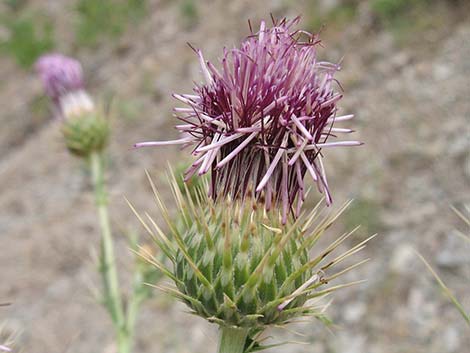 Flowers purple-red, tightly clustered |
Flowers: Blooms in the summer. Inflorescence: flowerhead formed of many flowers. Flowers emerge from a round, spiky ball that gets to about 1-inch diameter; flowers reddish-purple with long, upright petals that stand straight out. Seeds: achene. Habitat: Rocky and dry, well-drained gravelly areas in the desert mountains. Elevation: 8,000 to 12,000 feet. Distribution: California to Utah and New Mexico. Comments: The seeds of thistles are a favorite for American Goldfinches and Lesser Goldfinches, who usually delay breeding until the seeds are ready to eat. |
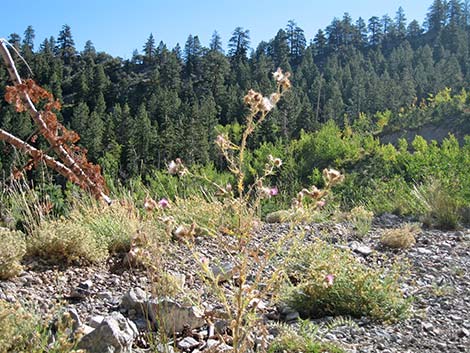 |
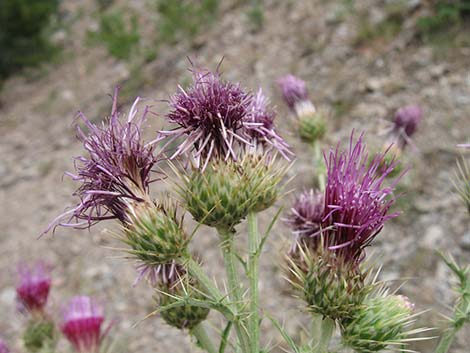 |
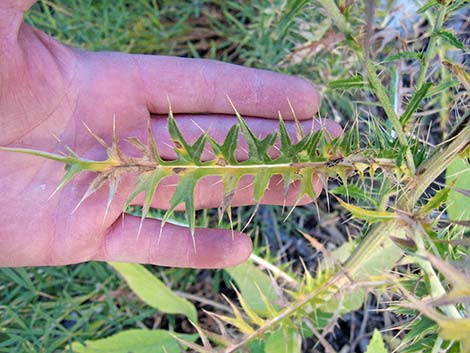 |
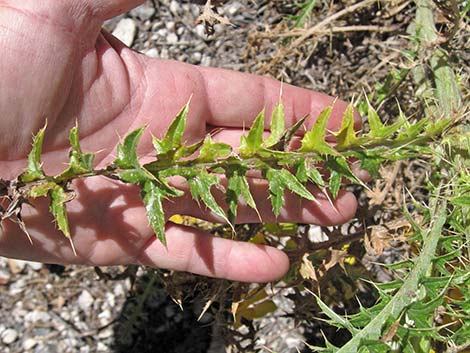 |
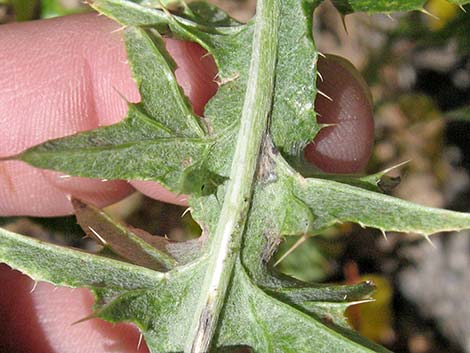 Ventral leaf surface without spines |
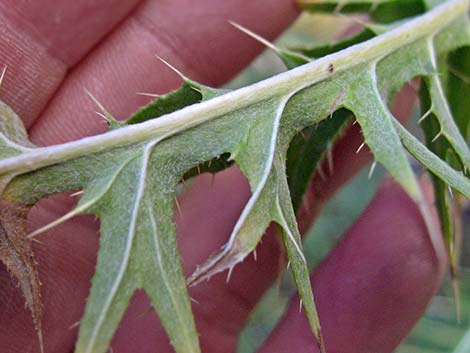 Ventral leaf surface without spines |
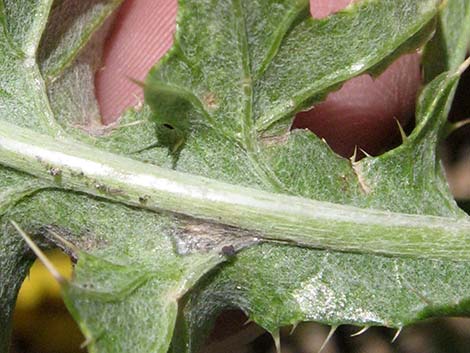 Ventral leaf surface with different degrees of tomentose hairs |
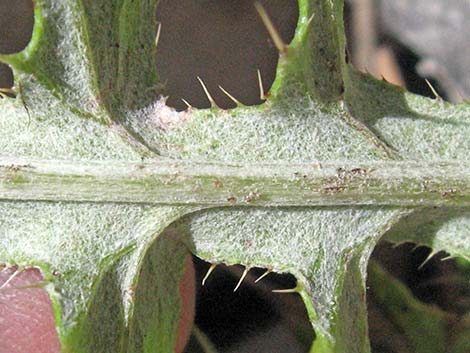 Ventral leaf surface with different degrees of tomentose hairs |
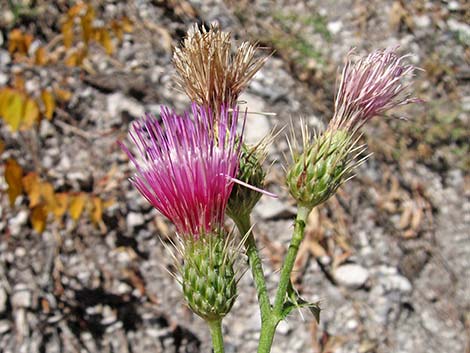 |
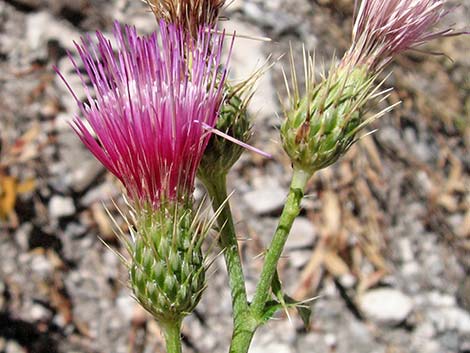 |
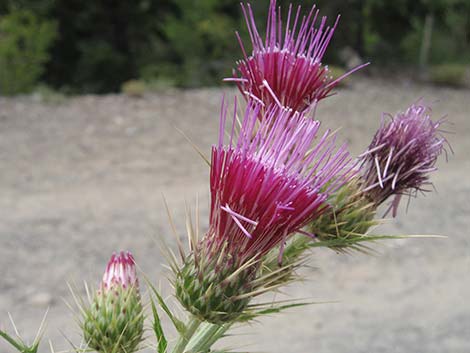 Flowers purple-red |
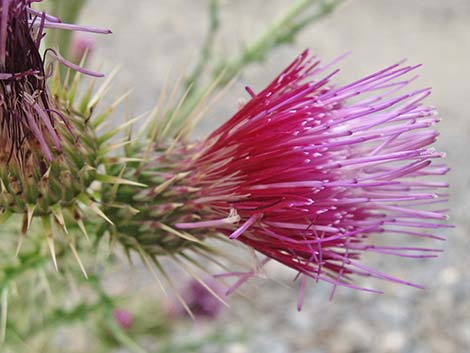 Flowers appear to be spraying out of the spiny ball (involucre) |
Note: All distances, elevations, and other facts are approximate. Names generally follow the USDA database.
![]() ; Last updated 240906
; Last updated 240906
| All Perennial Forbs | Plant Species Index | Glossary | Copyright, Conditions, Disclaimer | Home |